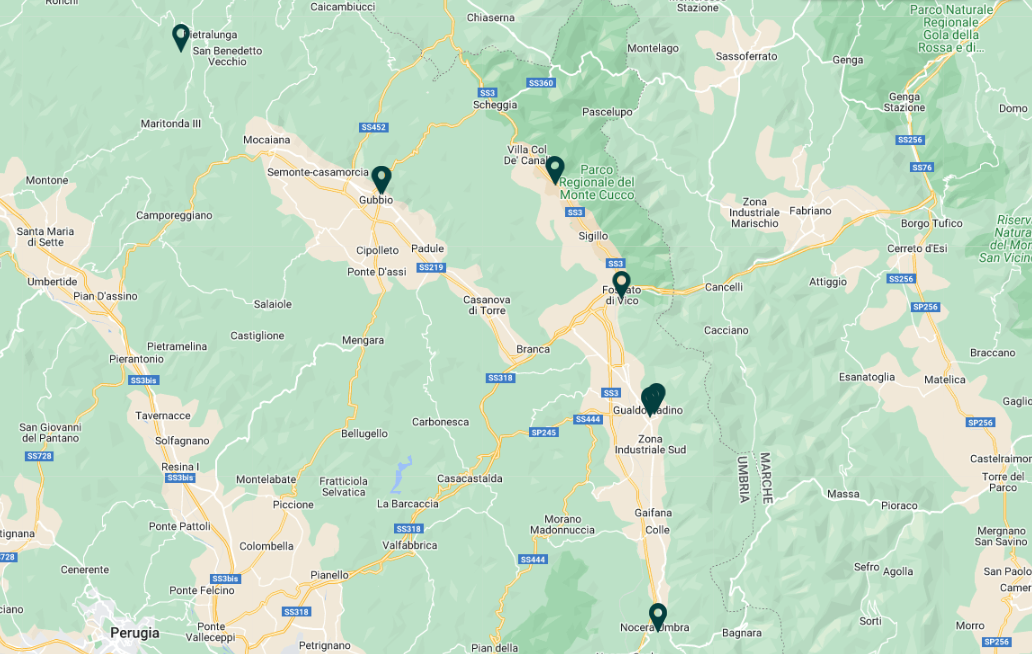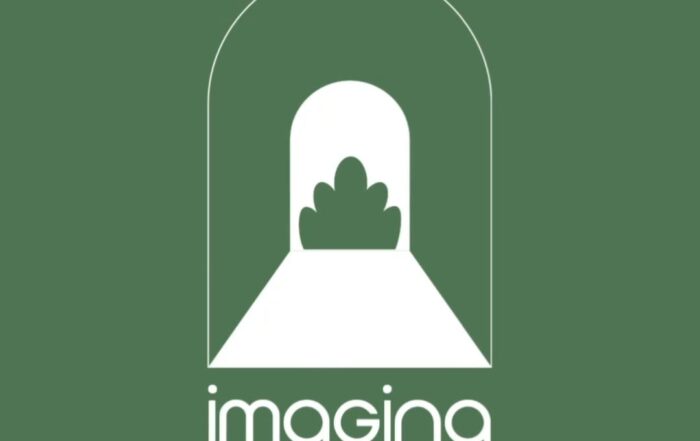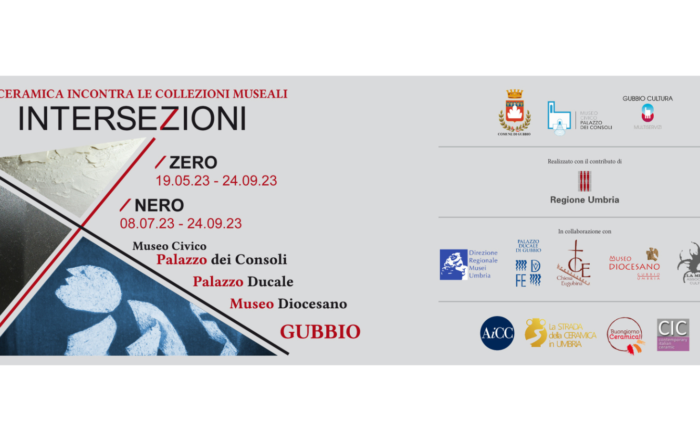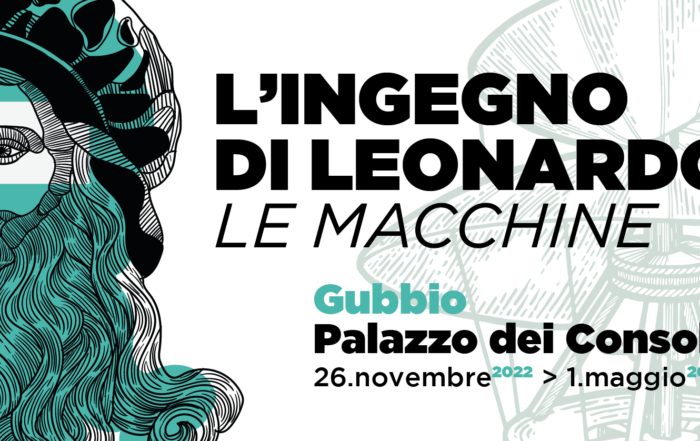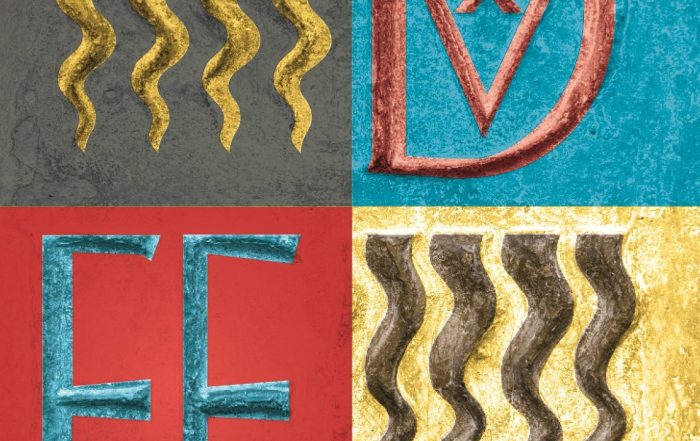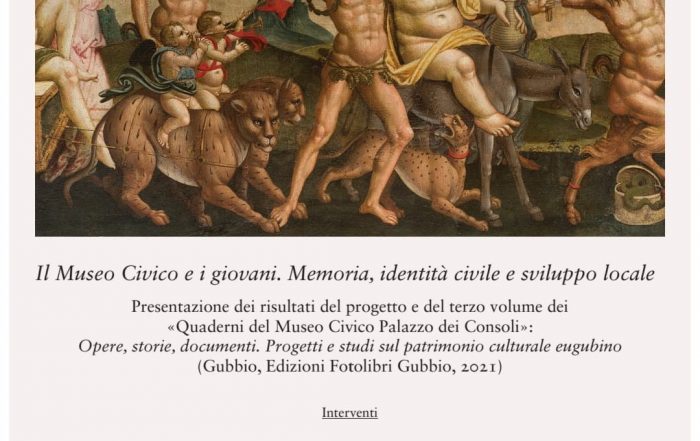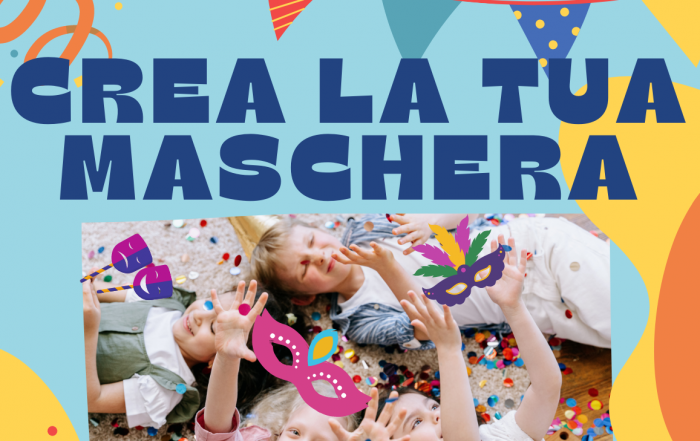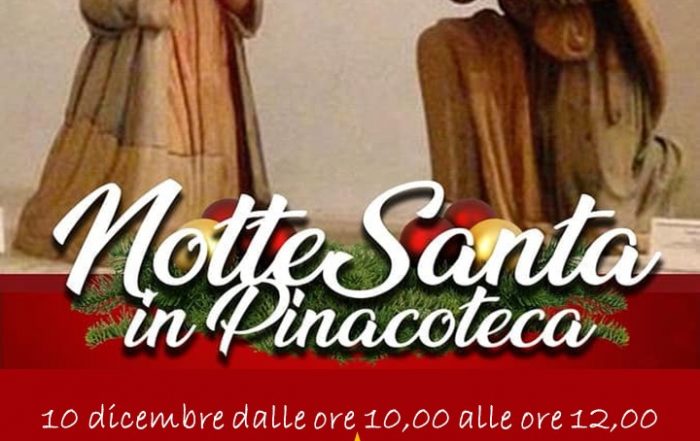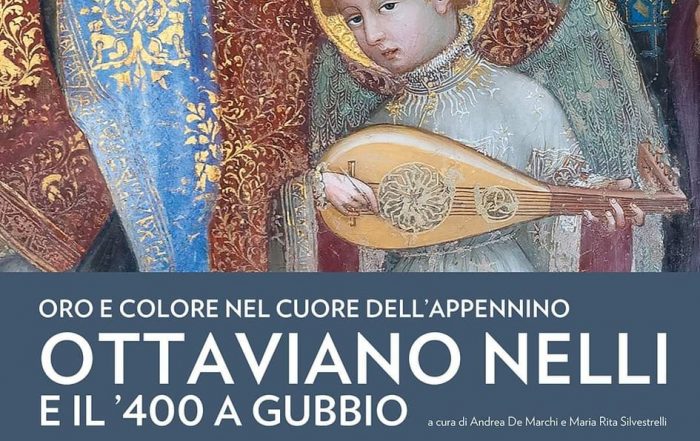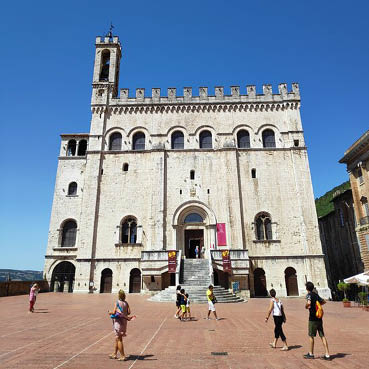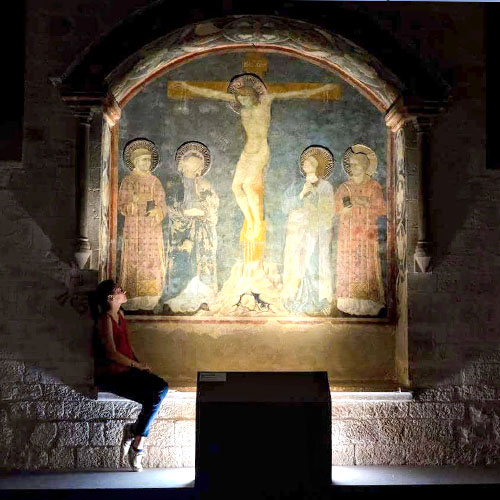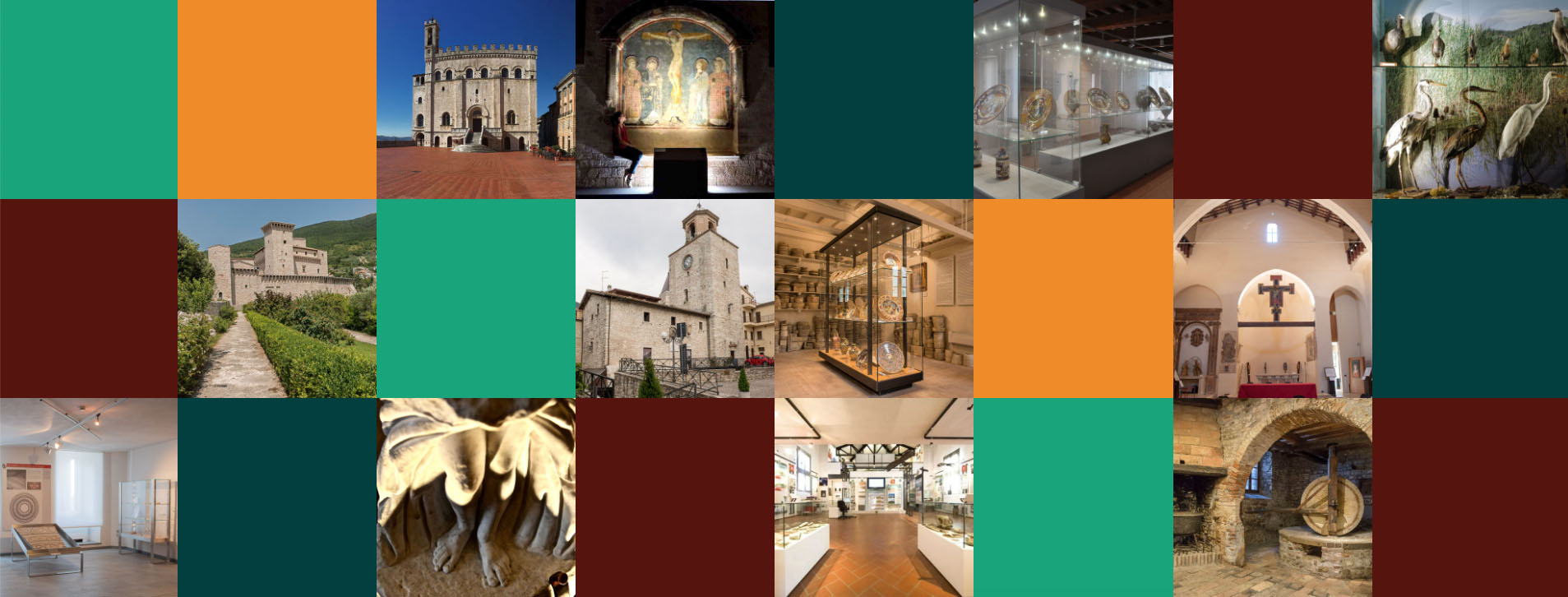


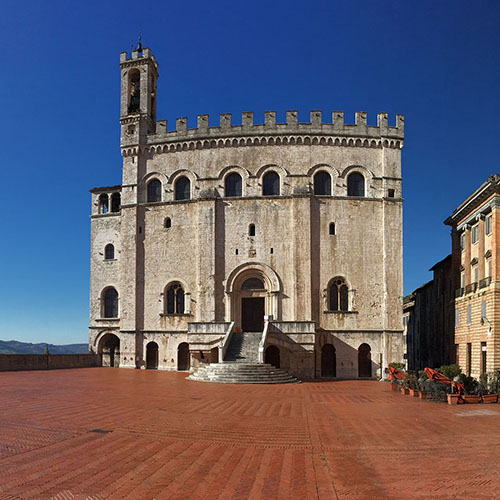
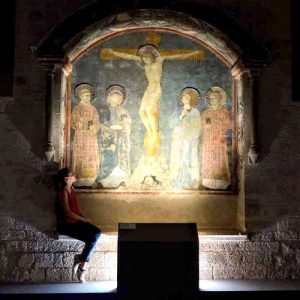

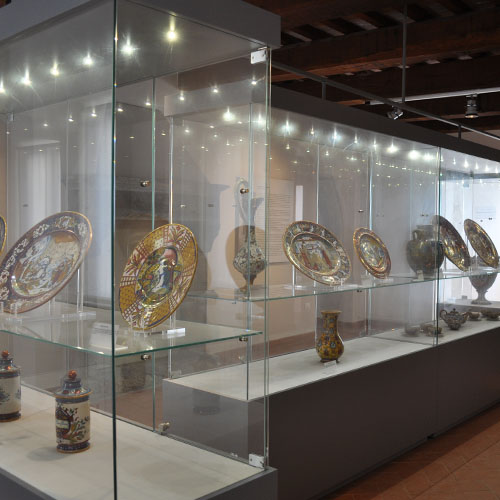

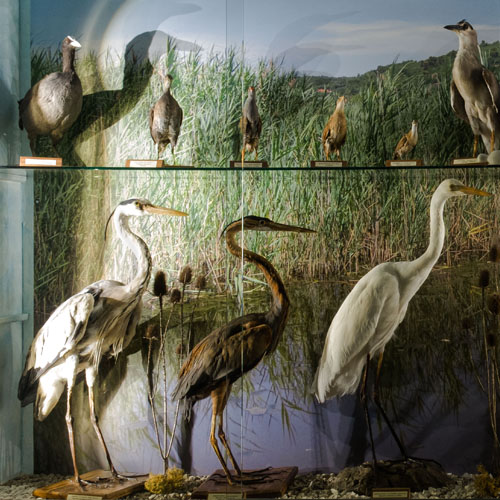



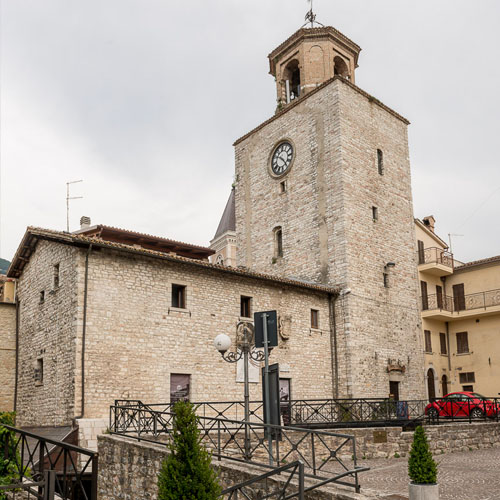
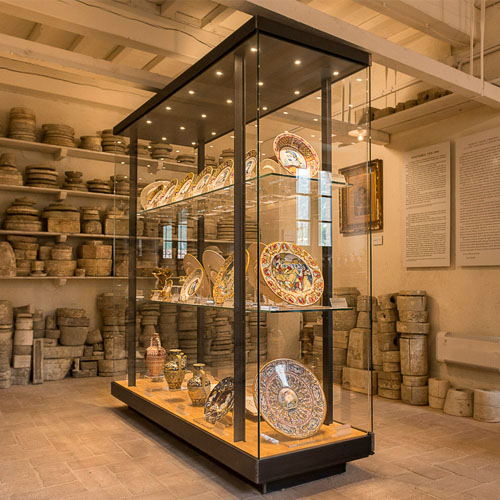

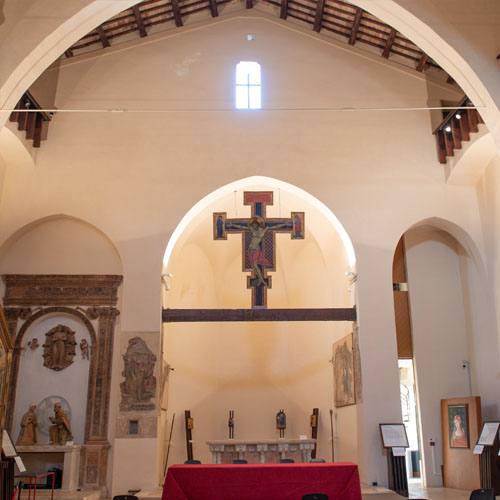

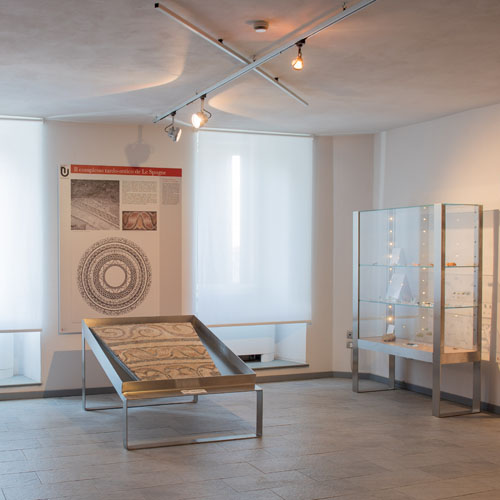

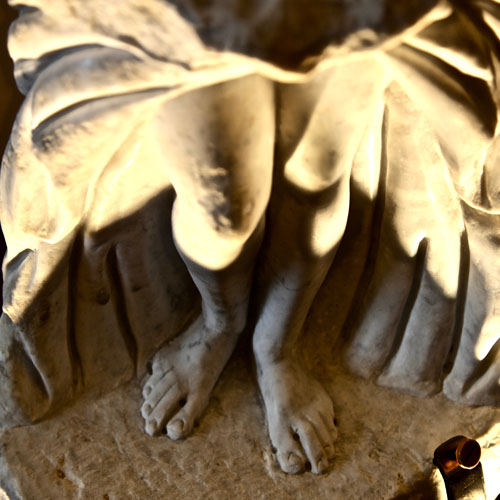

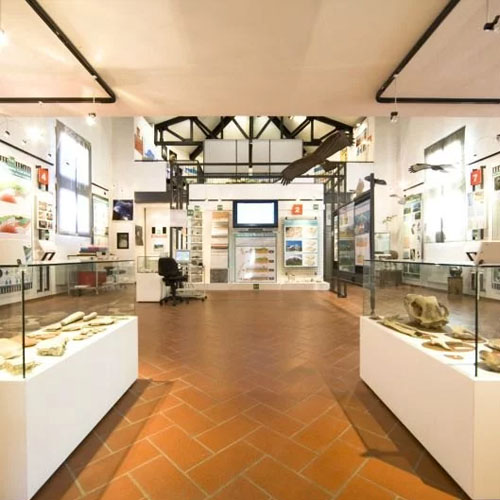

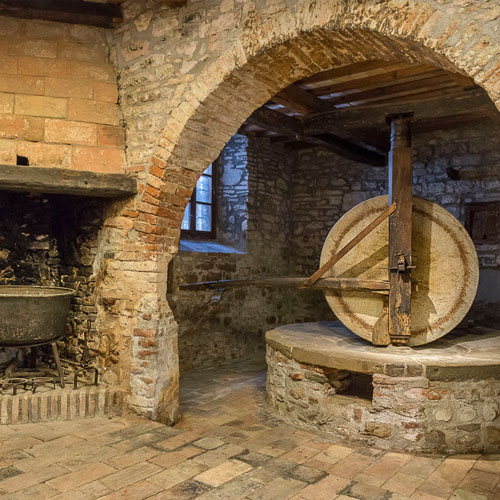

NORTH-EAST PASSAGE.
THE MUSEUMS AND
LANDSCAPE OF
NORTH-EASTERN UMBRIA.
This project aims to put online the cultural institutions and sites of interest which are part of the Umbrian Regional Museum Network while also highlighting the currently emerging natural and environmental issues relevant to the north-eastern areas of the Region. The primary intention is to increase awareness both of the museums themselves and of the natural landscape of the territory, but also to underline, strengthen and enhance the organic links which exist between the various museums in the area, between the museums and their surrounding districts and, also, between the different local communities, whose historical memories and identity are further strengthened by the sharing of knowledge about them. The underlying philosophy of the project envisages an active role for museums in safeguarding the territory’s heritage and facilitating the informed enjoyment of its treasures, whether by residents in the local communities or temporary visitors.
NEWS
“IMAGINA”, BIENNALE DI GUBBIO 2023: CONTEMPORARY ART
Gubbio (Pg) will host, starting from October 15 2023, IMAGINA, a large and elaborate exhibition of contemporary art that crosses and involves the entire city. Inauguration on October 15th, 12:00 PM, at Palazzo Pretorio, Piazza [...]
Intersezioni: Ceramics meets museum collections
TEMPORARY EXHIBITION
Temporary exhibition “L’ingegno di Leonardo. Le macchine”.
“L’ingegno di Leonardo. Le macchine” Gubbio, Palazzo dei Consoli 26th november 2022 – 1st maggio 2023 In the exhibition at Palazzo dei Consoli it will be possible to admire over 50 scale models of various sizes, [...]
Federico da Montefeltro and Gubbio. “Lì è tucto el core nostro et tucta l’anima nostra”
Gubbio is taking part in celebrations to mark 600 years since the birth of Duke Federico da Montefeltro who, according to several biographers, was born in the city on 7 June 1422. He was an [...]
THE CIVIC MUSEUM AND YOUTH. MEMORY, CIVIL IDENTITY AND LOCAL DEVELOPMENT
Presentation of the results of the project and of the third volume of the “Quaderni del Museo Civico Palazzo dei Consoli”: works, stories, documents. Projects and studies on the Eugubian cultural heritage. Friday 25 March [...]
CREATE YOUR MASK. Carnival educational workshop online.
Carnival is coming! One of the most loved holidays by all children! The Civic Museum of Palazzo dei Consoli has created an educational workshop for children and families just for the occasion. Would you like [...]
Notte Santa in Pinacoteca
Terza edizione della Notte Santa in Pinacoteca. Venerdì 10 dicembre dalle ore 10 alle ore 12. Laboratori creativi tra immagini e parole con tema "Natale e Fratellanza". Con la partecipazione dell'Istituto Omnicomprensivo dante Alighieri di [...]
ORO E COLORE NEL CUORE DELL’APPENNINO. OTTAVIANO NELLI E IL ‘400 A GUBBIO.
Nelle sedi dei musei di Palazzo dei Consoli e Palazzo Ducale sarà visibile al pubblico, dal 23 Settembre 2021 al 9 Gennaio 2022, una mostra attesa e necessaria: la città rende omaggio al pittore eugubino [...]

This project envisages the promotion of transversal or thematic itineraries centred both on the collections of individual museums and the cultural and natural heritage of their surrounding territory. The itineraries are intended to highlight the peculiar nature of the cultural and environmental problems currently emerging but within an overall unifying framework. In this perspective, each specific aspect, each particular focal point, is relevant to and plays its part in promoting the territory as a whole and its historical and artistic heritage in its entirety, thus creating a complete picture in which, however, specificity and identity are also centre stage.

This project envisages the promotion of transversal or thematic itineraries centred both on the collections of individual museums and the cultural and natural heritage of their surrounding territory. The itineraries are intended to highlight the peculiar nature of the cultural and environmental problems currently emerging but within an overall unifying framework. In this perspective, each specific aspect, each particular focal point, is relevant to and plays its part in promoting the territory as a whole and its historical and artistic heritage in its entirety, thus creating a complete picture in which, however, specificity and identity are also centre stage.
There are a variety of teaching materials, which can be used either in the exhibition halls of the Museum or remotely, pertaining to the collections or to study themes of interest to the territory’s schoolchildren, thus offering them the opportunity to widen their knowledge of the territory’s history as part of their school syllabuses. In this way the historical, artistic, anthropological and natural aspects of the territory make up a veritable text-book in which the focal points on the web site, the individual museums and the itineraries proposed constitute the various pages and chapters that can be browsed through.

There are a variety of teaching materials, which can be used either in the exhibition halls of the Museum or remotely, pertaining to the collections or to study themes of interest to the territory’s schoolchildren, thus offering them the opportunity to widen their knowledge of the territory’s history as part of their school syllabuses. In this way the historical, artistic, anthropological and natural aspects of the territory make up a veritable text-book in which the focal points on the web site, the individual museums and the itineraries proposed constitute the various pages and chapters that can be browsed through.

MeTU
STUDY
The available material can be used either directly or remotely, and is intended for use both by people living outside of town, and by visitors who want to extend their knowledge of particular and significant aspects of the Museum collections, or indeed to learn about the cultural and natural heritage of the regional heartland as revealed in its tourist routes and itineraries.

The available material can be used either directly or remotely, and is intended for use both by people living outside of town, and by visitors who want to extend their knowledge of particular and significant aspects of the Museum collections, or indeed to learn about the cultural and natural heritage of the regional heartland as revealed in its tourist routes and itineraries.

